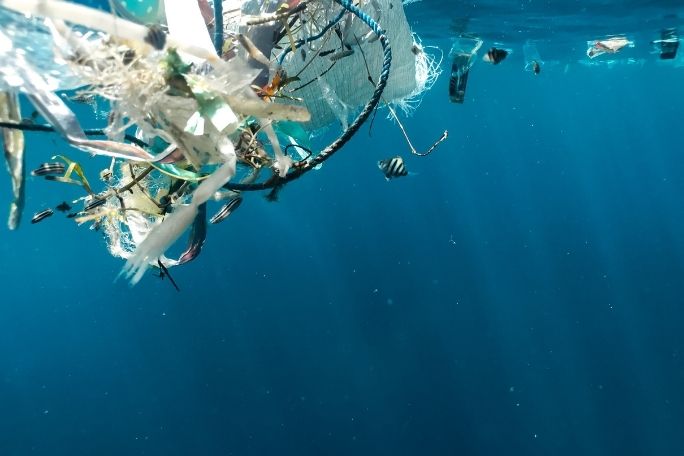Lesson summary
Students think about how we are connected to the ocean through the ways we need it and impact it. Students begin by looking at how we need the ocean by watching a clip and thinking about what else they would need to know in order to understand this topic more deeply. Students then create a range of questions around how we need the ocean that can be used to guide an inquiry into the driving question; ‘How are we connected to the ocean?’
Learning intentions:
Students understand...
- some of the ways that we need the ocean
- how to generate questions to guide an inquiry
Success criteria:
Students can...
- participate in group and class discussions
- work collaboratively and independently
- generate questions for an inquiry
- create a communication piece (optional)
Lesson guides and printables
Curriculum links
Select your curriculum from the options below.
Lesson details
Curriculum mapping
Australian curriculum content descriptions:
Year 7 Geography:
- Classification of environmental resources and the forms that water takes as a resource (ACHGK037)
- The way that flows of water connects places as it moves through the environment and the way this affects places (ACHGK038)
- Economic, cultural, spiritual and aesthetic value of water for people, including Aboriginal and Torres Strait Islander Peoples and peoples of the Asia region (ACHGK041)
- Develop geographically significant questions and plan an inquiry, using appropriate geographical methodologies and concepts (ACHGS047)
Year 8 Geography:
- Different types of landscapes and their distinctive landform features (ACHGK048)
- Spiritual, aesthetic and cultural value of landscapes and landforms for people, including Aboriginal and Torres Strait Islander Peoples (ACHGK049)
- Develop geographically significant questions and plan an inquiry using appropriate geographical methodologies and concepts (ACHGS055)
Year 9 Geography:
- Distribution and characteristics of biomes as regions with distinctive climates, soils, vegetation and productivity (ACHGK060)
- The perceptions people have of place, and how these influence their connections to different places (ACHGK065)
- Develop geographically significant questions and plan an inquiry that identifies and applies appropriate geographical methodologies and concepts (ACHGS063)
Year 10 Geography:
- Human-induced environmental changes that challenge sustainability (ACHGK070)
- Develop geographically significant questions and plan an inquiry that identifies and applies appropriate geographical methodologies and concepts (ACHGS072)
Syllabus outcomes: GE4-1, GE4-2, GE4-3, GE4-4, GE4-5, GE4-6, GE4-7, GE5-1, GE5-3, GE5-7.
General capabilities: Critical and Creative Thinking, Literacy.
Cross-curriculum priority: Sustainability (OI.2), Aboriginal and Torres Strait Islander Histories and Cultures (OI.2, OI.3).
Relevant parts of Year 7 Geography achievement standards: Students explain interconnections between people and places and environments and describe how these interconnections change places and environments. Students identify geographically significant questions to frame an inquiry.
Relevant parts of Year 8 Geography achievement standards: Students explain interconnections within environments and between people and places and explain how they change places and environments. Students identify geographically significant questions from observations to frame an inquiry.
Relevant parts of Year 9 Geography achievement standards: Students analyse interconnections between people, places and environments and explain how these interconnections influence people, and change places and environments. Students use initial research to identify geographically significant questions to frame an inquiry.
Relevant parts of Year 10 Geography achievement standards: Students identify, analyse and explain significant interconnections between people, places and environments. Students use initial research to develop and modify geographically significant questions to frame an inquiry.
This lesson is part of the wider unit of work Take 3 For The Sea – Project-based Learning – Years 7 to 10
Time required: 60-120 minutes
Level of teacher scaffolding: Medium – oversee discussion and student activities
Resources required
- Butchers paper and pens
- Device capable of presenting a website and video to the class
- Exta paper or workbooks
- Student Worksheet – one copy per student
Skills
This lesson is designed to build students’ competencies in the following skills:
- Communication
- Critical thinking
Additional info
Take 3 is an Australian charity removing rubbish from the environment through education programs, international campaigns and clean-ups. Take 3’s call to action is simple: Take 3 pieces of rubbish with you when you leave the beach, waterway or… anywhere and you have made a difference.


Welcome back!
Don't have an account yet?
Log in with:
Create your free Cool.org account.
Many of our resources are free, with an option to upgrade to Cool+ for premium content.
Already have an account?
Sign up with:
By signing up you accept Cool.org's Terms and Conditions(Opens in new tab) and Privacy Policy(Opens in new tab).